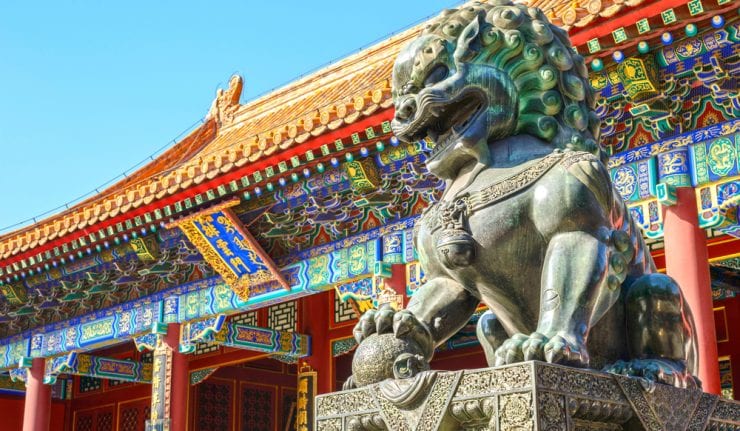Back in 1989, Japan was in focus and the target of a high level of criticism, as wealthy Japanese investment pools, corporations and individuals were buying up American trophy properties at sky high-prices, including the Rockefeller Center in Manhattan, the Westin Hotel chain and the Pebble Beach golf resort. Mitsubishi Estate Co. paid the Rockefeller family $1.4 billion for an 80% stake in the complex in 1989 and 1990. By early 1995, Mitsubishi had lost more than $600 million on its investment and put the property under bankruptcy protection.
During the late 1980s, the Japanese yen had appreciated greatly against the U.S. dollar, and the Nikkei 225 traded to an all-time high of 38,195 in December 1989. The bubble burst after the Bank of Japan tightened monetary policy at the start of 1990, triggering the collapse of equity and land prices. By September of that year, the Nikkei index crashed to just half its record high. Last Friday, the Nikkei closed at 31,450, and is still well off from where it traded 33 years ago.
Back then, the Bank of Japan’s (BOJ’s) interest rates were at 2.5%, the lowest they’ve been since the central bank transited to a floating exchange rate in the early 1970s. Easy access to credit in the 1980s, low unemployment and accelerating economic growth stoked the torrid stock market rally until the BOJ tightened monetary policy, sending that economy into what was coined “the lost decade.”
Today, Japan’s national debt is pushing 264% of gross domestic product (GDP) due to an aging population that is putting growing strain on public finances, requiring increased spending on healthcare, pensions and social security. Sound familiar?
During the first quarter of 2023, total debt as a percentage of gross domestic product in China soared to 279.7% in the first quarter, according to central bank and statistics bureau data compiled by Bloomberg. That was an increase of 7.7 percentage points from the previous quarter, the biggest jump in three years.
China faces a double-edge sword within its working force. For decades, China enforced a one-child policy on families that has created a scarcity of young workers to support an aging population. A summary of the Pew Research Center estimates that China’s population has already begun to decline, and that soon the economy will have less than three people of working age for every retiree. Because these three workers cannot possibly produce the required surplus, Beijing is using debt to support its social security pension obligations.
Because of the extended long period of zero-Covid measures imposed by the CCP, young workers had to wait to obtain educational degrees and internships while companies were taking a more cautious approach to hiring new employees. As it stands, China’s youth unemployment rate has doubled in the past four years, with the unemployment rate for young people ages 16-24 soaring to record highs above 20% during May of this year. It’s gotten so bad that China’s National Bureau of Statistics stated this past week that it would suspend future reporting on youth unemployment.
This is the kind of structural stuff that sows the seeds of civil unrest. The law of diminishing returns is also hitting China like a slow-moving tropical storm. Kenneth Rogoff, a professor of economics at Harvard University, said, “China’s economic ascent draws parallels to what many other Asian economies went through during their periods of rapid urbanization, as well as what European countries such as Germany experienced after World War II, when major investments in infrastructure boosted growth. At the same time, decades of overbuilding in China resembles Japan’s infrastructure construction boom in the late 1980s and 1990s, which led to overinvestment.”
“The leading point is they are running into diminishing returns in building stuff,” Rogoff continued, “There are limits to how far you can go with it. With so many needs met, economists estimate China now has to invest about $9 to produce each dollar of GDP growth, up from less than $5 a decade ago, and a little over $3 in the 1990s.”
Despite the efforts of Beijing authorities and the BOJ to stimulate the financial markets, China has some deep-rooted problems that risk putting that economy into a long-term deflationary spiral. Looking at both of their primary stock market indices, the large-cap index that is tracked by the iShares China Large-Cap ETF is testing the lows of 2008, while the Shanghai Composite is faring considerably better.
How Chinese officials handle the current commercial property crisis will provide a better sign as to whether their problems remain localized or if there is any risk of contagion to global markets, specifically to the U.S. market. Property developer Evergrande was 2021’s shock wave story, when they defaulted after a liquidity crisis — and they filed for Chapter 15 bankruptcy protection in New York last Thursday. Now, Country Garden, which used to be China’s largest developer, is at risk of facing default in the next few weeks. The news sent Hong Kong’s Hang Seng Index into bear market territory on Friday.
As the global financial community waits in high anticipation to see if China can stabilize the commercial property market and the shadow banking sector, it stands to reason that investors should think twice about investing in Chinese stocks. There are plenty of excellent stocks on sale in the United States where the economy is on much better footing. Yes, the United States needs to resolve its own pending debt spiral as has been seen by the recent bump in bond yields in reaction to the huge bond auctions taking place this month.
Investors will get a chance to find out just how vigilant Fed Chair Jay Powell is when he speaks at the Jackson Hole Summitt later this week. The U.S. Federal Reserve is the world’s central banker, and what Powell says could put a line under current market weakness or exacerbate the current volatility. He needs to provide that vote of confidence the market is seeking, where the United States can still thrive even if China doesn’t.
P.S. Come join me and many of my Eagle colleagues on an incredible cruise! If you book before Sept. 29, you’ll receive a spend-as-you-wish $250 ship board credit! In addition, this is all-inclusive — meals, drinks and even the excursions are included in your one-time price! We set sail on Dec. 4 for 16 days, embarking on a memorable journey that combines fascinating history, vibrant culture and picturesque scenery. Enjoy seminars on the days we are cruising from one destination to another, as well as dinners with members of the Eagle team. Just some of the places we’ll visit are Mexico, Belize, Panama, Ecuador and more! Click here now for all the details.




